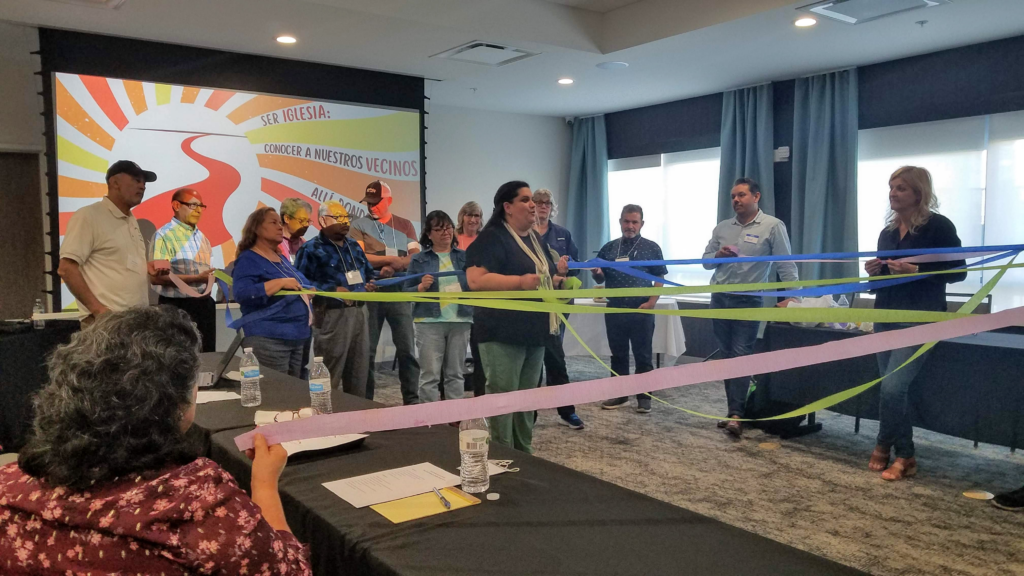Western District Conference Stories
Being the Church Together
Posted on May 2, 2023

Two recent experiences have prompted my reflection on what it means to be the church.
On Easter Sunday I attended the closing worship service of Trinity Mennonite Church (HIllsboro, KS). After considerable discernment, the congregation had agreed that the life of their congregation was coming to an end. Rather than hanging on to mere survival, they made intentional plans for individuals in the congregation to seek new places to worship, and for the church building to be transferred to a community child-care center. The worship service on Easter was an opportunity to share memories from the 57 years of the church’s life, express both grief and gratitude in this transition, and proclaim hope in the Easter promise that “we can live without fear, but we need to trust Jesus to lead us into the future.” (Trinity worship bulletin, April 9, 2023). That morning the sanctuary was filled with extended families and friends, local neighbors, and sisters and brothers in Christ from the wider church community whose lives had been touched in some way by Trinity. It was a powerful testimony to the legacy and witness of this congregation, the seeds that it has sown, and God’s faithfulness throughout its lifetime.
Two weeks later I attended the church planting summit in Dallas, TX, sponsored by WDC’s Church Planting Commission on the theme Being Church: Meeting Our Neighbors Where They Are (pictured above). It was an inspiring gathering of experienced church planters, persons interested in starting new faith communities, and leaders seeking to revitalize established congregations – all learning together. We discussed what “church” means in a changing world, and partnerships that nurture vitality. In one session, we envisioned the church as a tree, affirming the importance of both roots and branches. I imagine roots to be what provides foundations, nourishment and resilience for the church: Jesus’ life, teachings, death and resurrection; Anabaptist core convictions such as discipleship, community and peacemaking; practices such as baptism and communion; traditions and history that give meaning and identity. Branches represent openness to the living Word of God and the wind of the Holy Spirit; outreach, growth and change; the need for pruning, and the potential to bear fruit and seeds that bring life beauty to the world. Roots and branches need each other – without either one, the tree (and the church) cannot thrive.
In both these experiences – the church closing service and the church planting summit – I see the importance of collaborating between different parts of the church and across seasons of congregational life. Both beginnings and endings require us to discern what it means to be the church and to listen for the Holy Spirit’s leading and timing. Individual congregations benefit from relationships with other congregations (even as scientific study is showing that trees are interconnected by underground fungal networks which carry nutrients, water and chemical signals between trees). New congregations benefit from the resources of established congregations and wisdom of experienced leaders, while established congregations benefit from new ideas prompted by church planting and reaching out to discover Christ’s presence in our local community.
Together we are a learning community, asking: What does it mean to “be the church?” What roots and branches give vitality to our congregations? How do our congregations meet our neighbors where they are? What endings and new beginnings is God calling our congregations to consider? WDC offers relationships and connections that can help us explore these questions together as we connect to God’s mission in the world.
-Heidi Regier Kreider, WDC Conference Minister
Posted on May 2, 2023 in Weekly Word